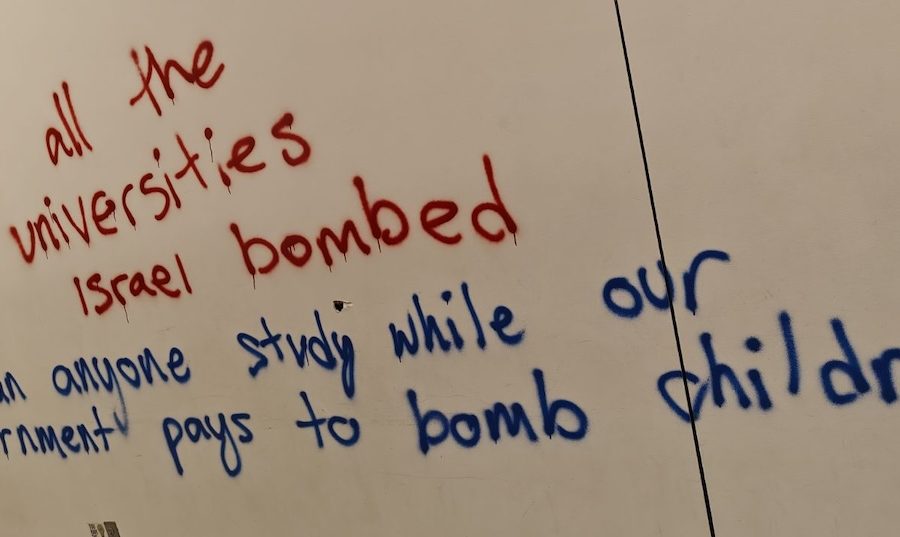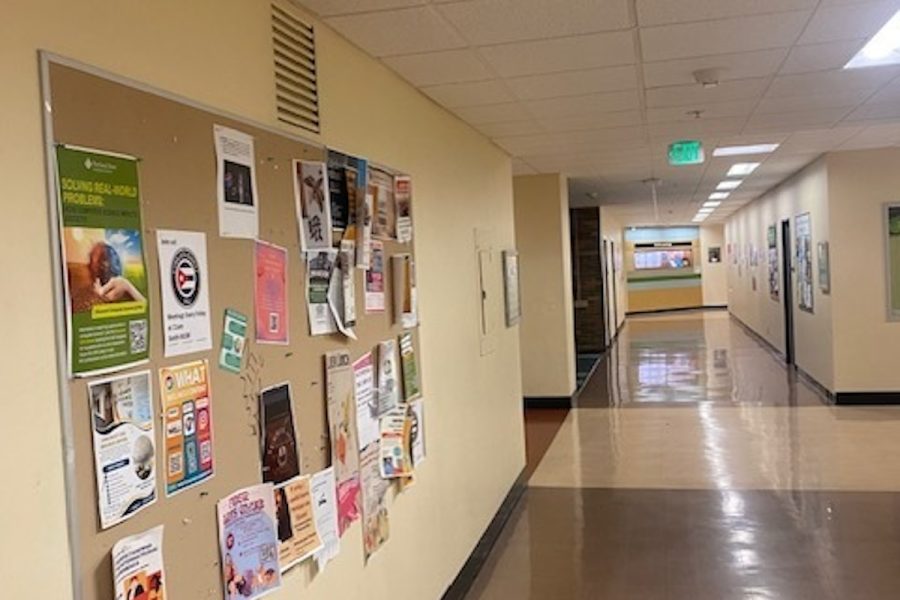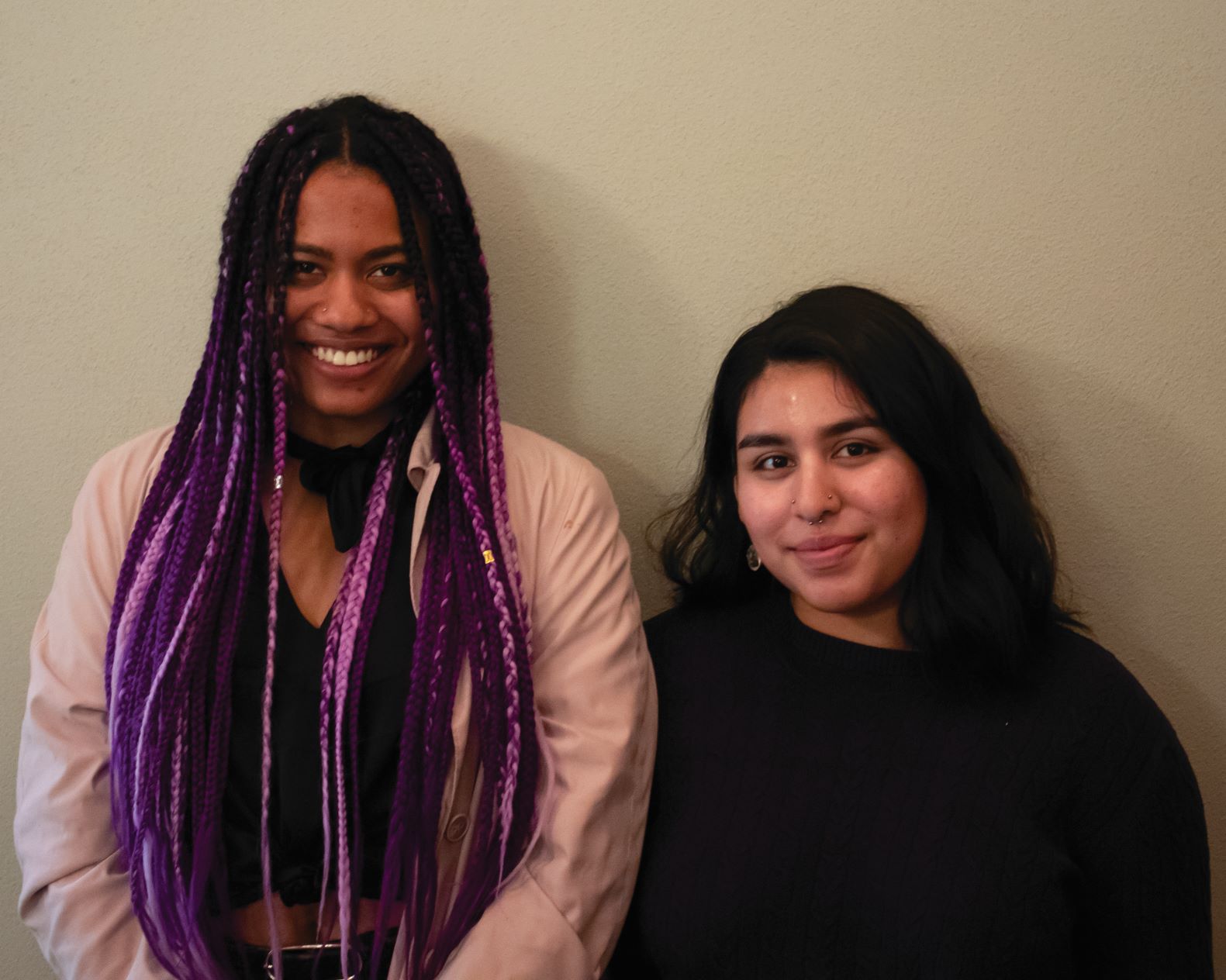Protesters filed into Smith Memorial Student Union’s (SMSU) room 296 carrying signs expressing dissatisfaction with the Student Fee Committee’s (SFC) proposed budget cuts. Signs reading “Save our orgs!” and “Where’s our funding?” were presented in front of the SFC at a budget hearing and review.
Fee Funded Areas (FFAs) are areas on campus that are either fully or partially funded by the student incidental fee. This is one of several fees that every student pays each term they attend PSU. These funds go towards covering a variety of services and opportunities on campus that are meant to serve students. FFAs are supposed to be for the direct benefit of students. This includes athletics, student organizations and clubs, childcare, resource centers and more. Currently, the student incidental fee stands at $369.
The main point of contention was the SFC’s proposed budget cuts of up to 12% for FFAs funded through the incidental fees students are charged annually. An email sent out by the Organization Budget Council (OBC)—a student run group responsible for allocating funds to organizations under Student Activities and Leadership Programs (SALP)—called for PSU students to sit-in on the budget hearing and review hosted by the SFC on Oct. 15.
Campus organizations presented the SFC with scenarios on how various budget cuts would impact them—from how organizations would handle no cuts, 8% cuts and 12% cuts. Groups were also requested to propose a ‘strategic ask’ to the committee which would contain the ideal amount of money the SFC could allocate to them.
With the University’s budget producing discord on campus, the budget cuts facing student organizations would expressly impact the student experience on the Park Blocks—an experience that can be isolating at a primarily commuter school.
“Part of why a lot of students come to PSU is because of the cultural celebration, the diversity and the ability to do things on campus,” said Minh Lam, Communication Chair for the OBC. “Without all of that, PSU is just a bare bones high school, and no one likes to just stay at high school. They come and they leave.”
Staff that support student organizations could be impacted as well—with SALP proposing cuts to student advisors according to the OBC Chair Khelen Walsh.
Students who wish to start a club could also face an uphill battle when attempting to institute their organization’s budget—along with already established smaller clubs.
The OBC ranks student organizations into nine tiers—with tier one receiving the least amount of funding and tier nine receiving the most. Tier nine is home to the larger student organizations on campus while younger, smaller organizations fall into tier one.
At the hearing, the OBC’s presentation laid out two scenarios that the campus organizations could face. Either 25 tier 1 groups could have funding eliminated or 13 tier two groups could have their funding cut.
“I think the biggest concern would be if they cut forming groups,” said Cece Austin, the Vice President of the PSU Neuroscience Association. “Even though we’re not a forming group we try to partner with forming groups a lot so that we can give them some of our budget to help uplift them. So the fact that they’re gonna cut student groups that are getting the lowest possible amount of budget is just going to stop any new interest from forming.”
Eseniya Zinkina is the Current President of the PSU Chess Club and was last year’s OBC Chair. She explained that while other universities can create a stronger sense of community by offering more club opportunities, PSU’s commuter school character impacts students’ desires to stay on campus after their classes.
“The budget cuts will affect the sustenance of PSU,” Zinkina said. “They will diminish PSU’s light. If you are to cut student organizations [funding], you’re risking losing the participation of students on campus. And the less students we have the poorer the [student] retention… students will start searching for that feeling of belonging somewhere else.”
Student Organizations not only provide a sense of community but also practical experience and advice for students. Clubs like the American Indigenous Business Leaders (AIBL) PSU chapter help serve students in pursuing future careers by offering a space for minority students to delve into their interests.
“As a native, we are already dealing with such small resources as is with the money we do have access to,” said Nova Van Pelt, the Vice President of AIBL. “With these budget cuts it will just limit more [of] what I as a Native American on PSU’s campus can do and have access to… it’s gonna be a lot harder for me to find community within the PSU campus.”
Though the impact on the student experience is apparent, the SFC’s job of creating a balanced budget provides a difficult task. According to a slide deck detailing factors taken into consideration by the SFC when creating the Fiscal Year 2026 (FY26) budget, there is an approximately $950K gap in the budget that must be filled by either increasing the student fee or cutting budgets. This all comes as student enrollment at PSU has been steadily declining.
Brady Roland is the President of PSU’s Student Government, the Associated Students of Portland State University (ASPSU). She is also acting as the Current Interim Chair of the SFC.
The SFC had recently undergone a change of leadership after Roland had presidentially dismissed the previous SFC Chair on ethical grounds. After an appeal, the decision was ultimately upheld by ASPSU’s judicial review board. According to Roland, the previous SFC Chair proposed and lobbied for the deep cuts student organizations are potentially facing.
“Essentially, the student incidental fee will continue to rise each year because we are in a deficit,” Roland said. “However, [in] my opinion, I don’t agree with the incredibly high cuts that the SFC is proposing. Unfortunately, while we lose more and more students and get less and less students enrolled each year, the rate has to go up and there’s just no other way around it. And with that comes cuts.”
Angela Hamilton—the Associate Director of SALP and Advisor of the OBC—echoed Roland’s sentiments that the proposed cuts were too high.
“It could have been less,” Hamilton said. “The 8% [budget cut] is automatically going to be a decrease, not even a stabilization. If everybody got this 8% it would be more than this million dollar gap.”
When listening to organizations’ budget presentations, the SFC has “funding philosophies” that they keep in mind. The funding philosophies for FY26 are measuring success, basic needs support, sustainability, inclusivity and accessibility according to the FY26 Budget School slide deck.
“I think it’s really important that we strictly follow the funding philosophies when we’re doing this because it will be such a hard decision,” Roland said. “So it’s really about how can the FAAs show us that they are following the funding philosophies or that they plan to follow the funding philosophies into the next year.”
This entire budgeting process for FY26 is still in its early stages, with Oct. 22 being the last date the SFC is holding budget hearings. After that, the committee will deliberate until Nov. 15 and then the final budget allocation proposal will be sent to the ASPSU Senate for approval. It will then be sent to PSU President Ann Cudd and then the PSU Board of Trustees for final approval.
The SFC and OBC are both student-run committees. Those who participated in the Oct. 15 sit-in were students expressing their concern for their organizations’ futures. In the face of budget deficits and difficult decisions, it is partially up to students to chart the path forward for the organizations they participate in and the community they want to cultivate.
“The reason I got involved in student leadership was to just have a place where I could fit in and belong on campus,” Walsh said. “Without student organizations, there would be none of that.”








